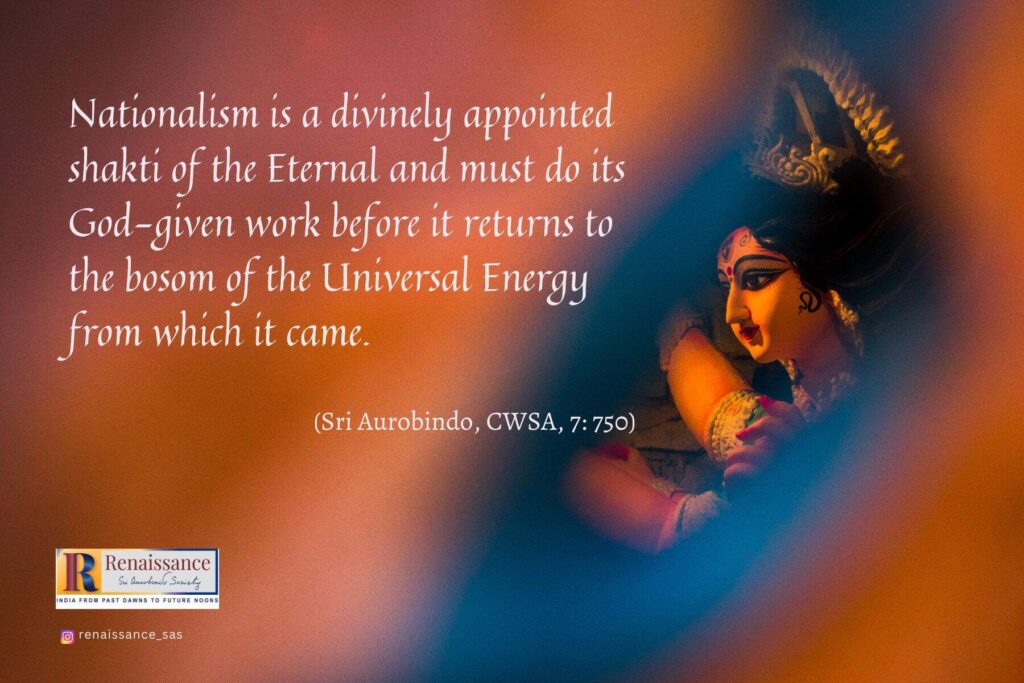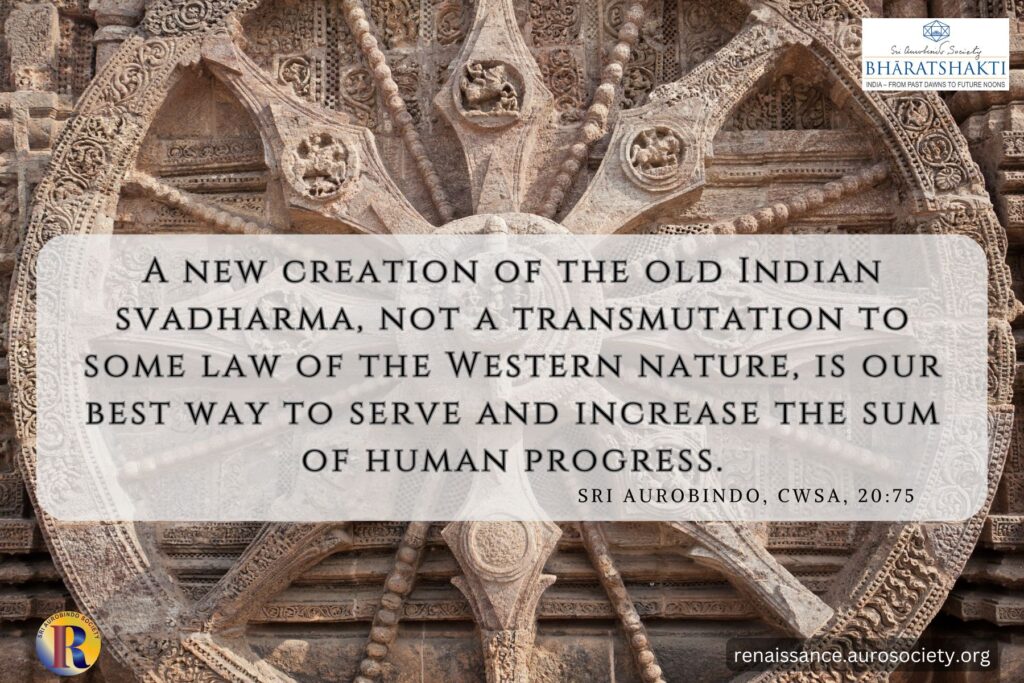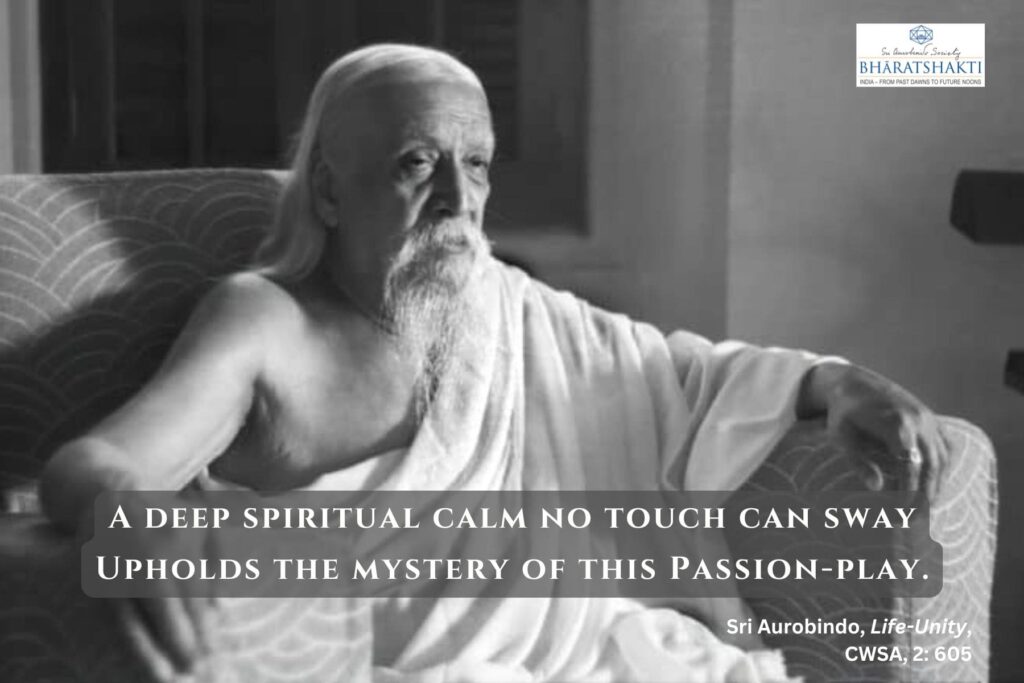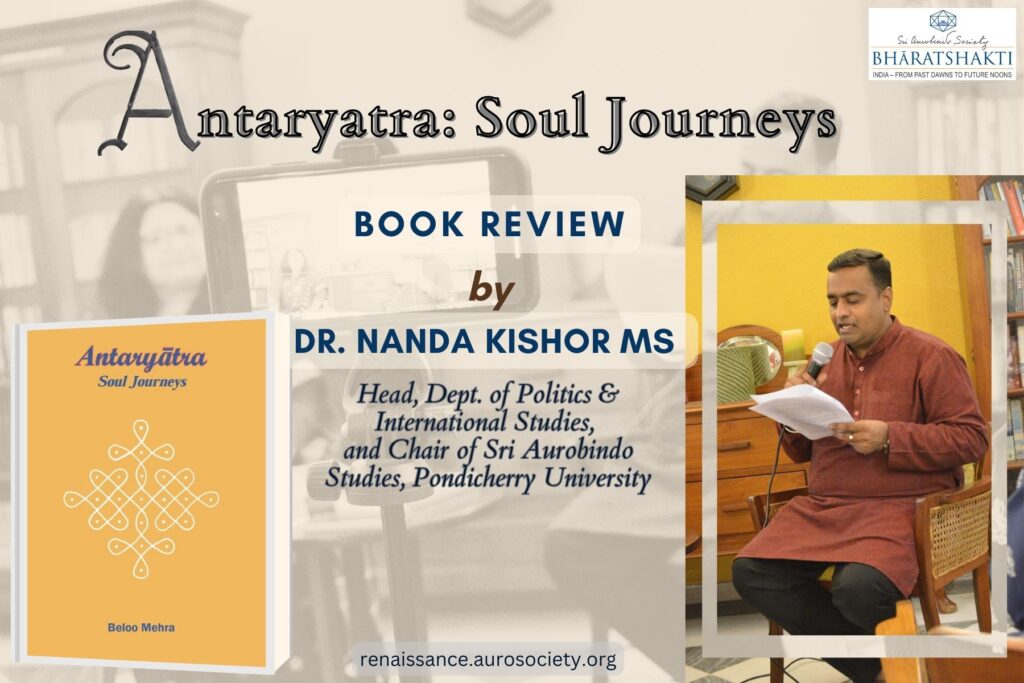Volume 1, Issue 3
Author: Agali Venkappa Sastri
Editor’s Note: This long essay of over 26,000 words was first published in two parts in the annual journal called ‘Sri Aurobindo Circle’ (1949 and 1950 issues) under the same title. The present version – published here in several parts – is slightly updated and edited by Renaissance editors, and has been re-organised under separate headings and sub-headings to ensure easier flow of reading.
By following certain tempting directions she may conceivably become a nation like many others evolving an opulent industry and commerce, a powerful organization of social and political life, an immense military strength, practising power-politics with a high degree of success, guarding and extending zealously her gains and her interests, dominating even a large part of the world, but in this apparently magnificent progression forfeiting its Swadharma, losing its soul.
Then ancient India and her spirit might disappear altogether and we would have only one more nation like the others and that would be a real gain neither to the world nor to us. There is a question whether she may prosper more harmlessly in the outward life yet lose altogether her richly massed and firmly held spiritual experience and knowledge.It would be a tragic irony of fate if India were to throw away her spiritual heritage at the very moment when in the rest of the world there is more and more a turning towards her for spiritual help and a saving Light.
~ Sri Aurobindo’s Message to the Andhra University, December 1948
~ CWSA, Vol. 36, pp. 503-504)
SCOPE OF THE ENQUIRY: INTEGRAL VISION OF SRI AUROBINDO
This does not purport to be an account of the India’s struggle for freedom, or the appraisal of any party ideologies or the part played by individuals in the contest at various stages; nor does it propose to sketch the vivid and concentrated phase of Sri Aurobindo’s own activity on the political scene from 1902 to 1910.
These aspects have at best a historical or personal appeal or significance. But a consideration of the psychology of Indian nationalism, its primary inspiration, its essential development, and the temporary phases of reaction it suffered will help us to count our real gains and advance steadily to the goal which has been persisting in the Indian consciousness “through centuries of calamity and defeat” (CWSA, Vol 8, p. 152). What we have achieved so far is only the beginning or the starting point.
There are among us partisans of the past, partisans of the present and partisans of the future. Partisans of the past, if they endorse the present, endorse only so much of it as “still cherishes the principles of the high, perfect, faultless adorable past, that golden age of the race or the community” (CWSA, Vol. 13, p. 131) or they condemn it outright.
Partisans of the present are so much in love with the existing order that they would admit no change or experiment. The partisans of the future “call themselves the party of progress, the children of light and denounce the past as ignorant, evil, a mass of errors and abuses” (ibid, p. 130)
The true thinker can dispense with the éclat which attaches to the leader of partisans.
He will strive to see this great divine movement as a whole, to know in its large lines the divine intention and goal in it without seeking to fix arbitrarily its details; he will strive to understand the greatness and profound meaning of the past without attaching himself to its forms, for he knows that forms must change and only the formless endures and that the past can never be repeated, but only its essence preserved, its power, its soul of good and its massed impulse towards a greater self-fulfilment; he will accept the actual realizations of the present as a stage and nothing more, keenly appreciating its defects, self-satisfied errors, presumptuous pretensions because these are the chief enemies of progress, but not ignoring the truth and good that it has gained; and he will sound the future to understand what the Divine in it is seeking to realise, not only at the present moment, nor only in the next generation, but beyond…
ibid, pp. 131-132
The seer builds upon a sure basis of prevision, not surmise or speculation. He sees the lines of the divine architecture and shapes in accordance with the plan of the Divine Artificer. The present is the field of our endeavour. But the present cannot be dealt with alone.
A pragmatic approach fails because it fixes its eye on the shifting present, ignoring the past which has entered into it and the future which emerges out of it. It requires the seer-vision and the seer-will to take in the whole process and help forward rhythmic progression.
Sri Aurobindo, in laying emphasis on the future as he does, reveals the mode of Truth-consciousness that sees and builds, that goes beyond the hour and relates it to the entire time-series and the timeless, the whole process of becoming that is predetermined by the initial impetus of a primal realisation.
* * *

* * *
To present nationalism as interpreted by Sri Aurobindo is to enter the whole region of his thought as it shapes itself in massive sequences such as The Life Divine, The Synthesis of Yoga, Essays on the Gita, The Human Cycle, The Ideal of Human Unity, The Renaissance in India and Other Essays on Indian Culture, etc., – not so much separate sequences as the simultaneous advance from many points of serried shining hosts to the city of the Victory of the Divine.
Sri Aurobindo has almost invented a technique of exposition of his own in which phrase and idea (vāk and artha) in “linked sweetness long drawn out” (John Milton) constitute a new diapason. In Emerson’s phrase, “the soul is wholly embodied and the body is wholly ensouled.” It suffers in the paraphrase, assumes a false rudimentary simplicity losing all the luminous living appeal of the original. His characteristic method is a copious, cumulative, affirmative, authentic statement, “large utterance of the early gods,” (John Keats) each time enlarging the circle till all Reality is comprehended.
All that can be done is to indicate tentatively the broad lines of the subject. For the rest, the reader must go, seek the rich ores in their native depths laid bare by a veritable “God’s Labour.”
Continued in Part 2….
Notes
[1] ‘own being’, ‘own becoming’; the principle of self-becoming; nature, real nature; essential nature and self-principle of being of each becoming; the pure quality of the spirit in its inherent power of conscious will and in its characteristic force of action; spiritual temperament, inborn nature, essential character.
[2] own law of action; true rule and way of being; truth of one’s own inner movement.
Cover image – Bhārata Mahima, by Ritam Upadhyay
Design: Beloo Mehra



